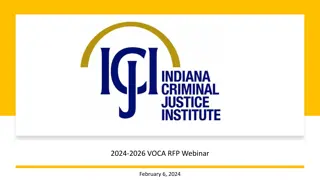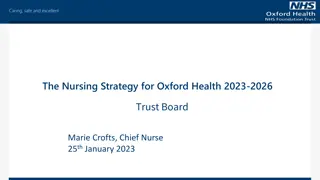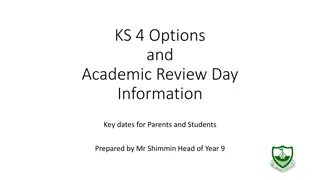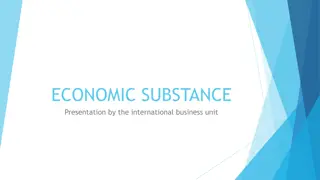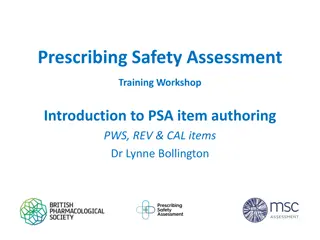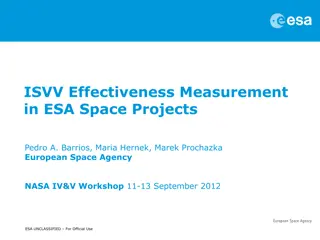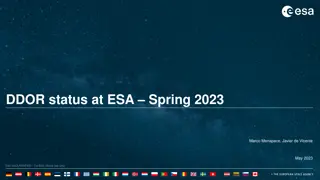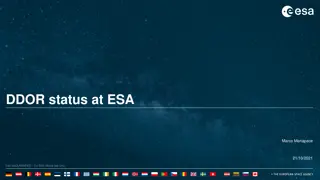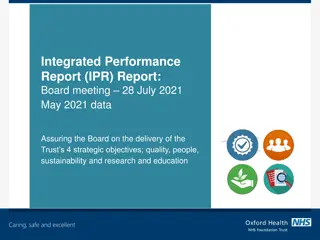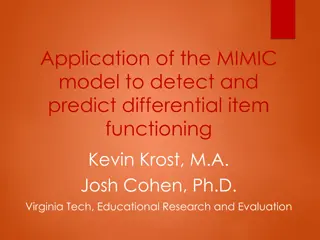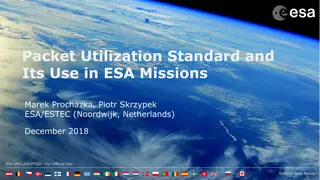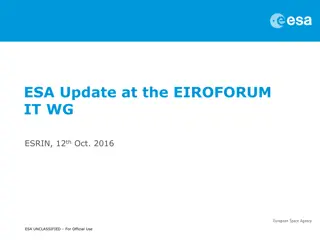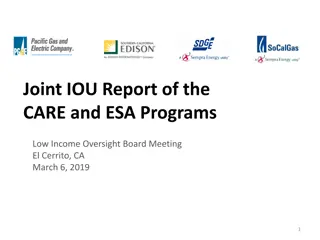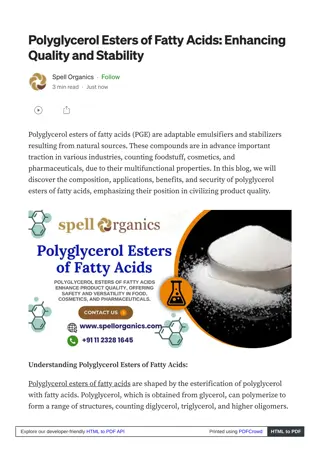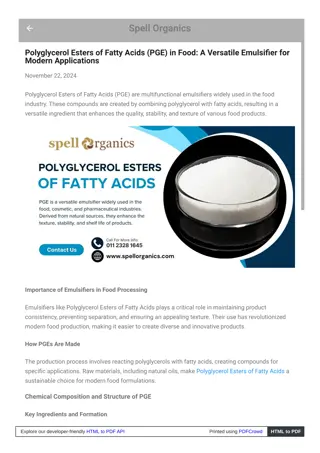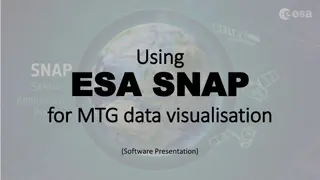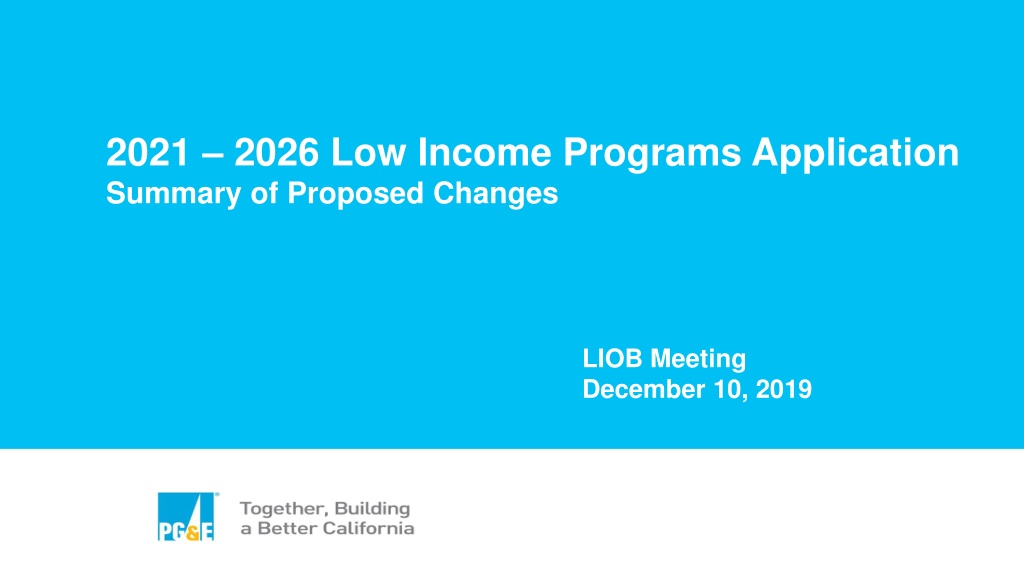
2021-2026 Low Income Programs Application Summary and Proposed Changes
"Explore the summary of proposed changes in low-income programs for 2021-2026, including budget allocations, policy adjustments, and new program structures aimed at enhancing energy savings and customer support. Learn about key initiatives such as the ESA and CARE/FERA programs and the focus on serving the most vulnerable populations."
Download Presentation

Please find below an Image/Link to download the presentation.
The content on the website is provided AS IS for your information and personal use only. It may not be sold, licensed, or shared on other websites without obtaining consent from the author. Download presentation by click this link. If you encounter any issues during the download, it is possible that the publisher has removed the file from their server.
E N D
Presentation Transcript
2021 2026 Low Income Programs Application Summary of Proposed Changes LIOB Meeting December 10, 2019
Summary of PG&E Requests ESA Program Budget - $1.1 billion for total program cycle o Multi-family budget portion is $262.6 million Refresh program design to achieve energy savings, and improve health, comfort and safety for the most needy customers CARE/FERA Program Budget - $4.3 billion Maintain CARE participation at 90 percent of eligible population and increase FERA participation ESA Key Policy Changes Flexibility to make more ESA program adjustments (fund shifting and ESA measure modifications) during program cycle via regulatory reports ESA Working Group should be established to discuss program changes 2
New ESA Plus Program Structure Single Family/Mobile Home COMPREHENSIVE Standard Program Multi-Family BASIC Income self-certification and no property owner approval Easy way to get started with guaranteed services, reduce barrier of unwillingness COMPREHENSIVE PLUS Targeted Segments Multi-Family Whole Building (MFWB) Plus Program Objective Provide offers/services for low moderate energy users to help reduce use and increase health, safety and comfort CARE customers, not ESA treated New CARE enrollments annually Provide unique offers/services to customer with greatest needs Deed and Non-Deed restricted buildings - Third Party Administrator; Procurement Review Group and Independent Evaluator Buildings with 65% of tenants ESA eligible Low Income MF households Customer Opportunity CARE customer - not ESA treated New CARE enrollments annually NEED STATES are: High Usage Electric and Gas, Medical Baseline, Disconnected, DAC/Tribal/Rural, Wildfire Threat Comprehensive Measures PLUS For High Usage: Diagnostic Driven Air Sealing Floor Insulation Air Purifier Portable A/C Energy Education (Tools) Air Purifier (no Rural) Portable A/C Minor Home Repair Plus Cold Storage Measures Simple Energy Savings Measures LED Lighting Power Strips Energy Education Energy Savings & HCS HVAC added Prescriptive Duct Test & Seal Portable A/C, Furnace Repair/Replacement for Renters Domestic Hot Water added Water Heater Repair/Replacement for Renters Miscellaneous added Pool Pumps Enclosure Lighting Refrigerators & Clothes Washer Energy Education TBD based on Third Party solicitation to include CAM, in- unit measures, SPOC 3
ESA Cost Effectiveness Test Results PG&E targets an average ESACET score of .70 for the program cycle at the portfolio level. 2023 2026 2024 2022 2021 2025 Program Year .66 .71 .75 .84 .59 .79 ESACET Score Vs. Estimated average ESACET for program cycle 2017 2020: .94 The cost effectiveness score is a compilation of program costs, energy savings, and non-energy benefits. 5
ESA Program Implementation - Milestone Gantt Chart 6 NOTE: Based on CPUC Decision in January 2021
Low Income Programs Proposed Pilots Virtual Energy Coach: Test concept of virtual coach where education and frequent communications will help drive savings with program enrollments and behavioral changes Leverage the Load Disaggregation project for customer recommendations and outreach Long Term CARE Customer: Test effectiveness of different outreach and communications to increase ESA participation among long term CARE customers (defined as 10 or more years continuously on CARE). 7
CARE/FERA Program 2021 - 2026 Proposed Changes Change certification period for Non-profit, Ag, Migrant Farm Worker housing facilities from 2 years to 4 years Change CARE eligibility estimate filing date from December to February Enhance the CBOs outreach: Propose increase capitation program payment from up to $20 to up to $30 for new CARE enrollment utilizing more holistic education to include ESA and rate options Propose same payment for new FERA enrollment for agencies participating in the capitation program 8
Questions? Contact Information: Marlene Murphy Roach Director, Income Qualified Programs & DACs 415.973.2090 Marlene.murphyroach@pge.com Lori Leiva Jungbluth Principal, Programs Strategy 415.973.3034 lori.leivajungbluth@pge.com Mary O Drain Expert, Regulatory Policy Analyst 415.973.2317 Mary.odrain@pge.com Neil Singh 415.973.1541 Manager, Program Delivery Neil.singh@pge.com 9

